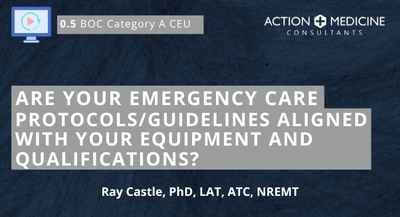AI Chat Bot
Are Your Emergency Care Protocols/Guidelines Aligned With Your Equipment and Training/Qualifications? › Learning Material
Presentation (Video)
Updated Apr 6, 2024
Copyright © 2025 Action Medicine Consultants, LLC
___MESSAGE___
___MESSAGE___


